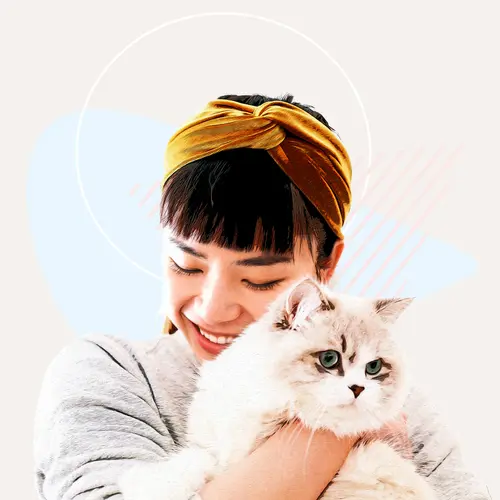Yawning is a phenomenon that has been observed in humans and animals, and, despite its prevalence, it remains poorly understood in humans.
Yawning happens reflexively. When you yawn, you take in a deep breath, open your mouth wide, and then exhale, usually without much thought. The result? Euphoria, or a feeling of relaxation. While the reason behind the human yawn may still be a mystery, there are several reasons why our feline companions engage in this reflexive behavior, and if you pay close enough attention, you can often pick up on what their yawns mean.
After all, a person’s body language can tell you a lot about them. The same goes for cats.
Why Do Cats Yawn?
Like you, cats yawn for various reasons. Their yawns are often accompanied by stretching. Mostly, cats yawn as a form of communication and an attempt to send you a message. If you see a cat exhibiting tense behavior, then you may notice its lack of stretching and yawning. On the other side, if you see a cat that is friendly, relaxed, and content, you may notice it stretching and yawning.
It's not just domesticated cats that engage in this behavior. Big cats, like lions, yawn too and can even be affected by contagious yawning — seeing another animal or person yawn and then yawning in return. Yawning also helps humans and animals become more alert. In the wild, collective yawning can even contribute to collective awareness, which could help wild cats notice food and threats.
Other reasons for a feline to yawn include:
- Waking up: Cats who are just waking up from a cat nap may yawn and stretch to take in oxygen and make it easier to gather more air in a single inhale.
- Irritation and stress: Yawning can also signify that your cat is irritated or stressed. Typically, if you notice your cat yawning without stretching, your cat may be annoyed. One reason for irritated yawning is when you pet your cat while it's sleeping.
- Relaxation: Cats who are well taken care of, either by being well-fed or given a decent amount of attention, will also yawn. If you’re spending time with your cat and engaging in playful activities only to notice your cat start to yawn, then it may be because it’s feeling relaxed.
- Boredom: You can probably relate — yawning is something we can’t control, especially if we’re tired or bored. If your cat is bored and uninterested in its environment, you can expect to see lots of yawns.
- Seeking attention: Finally, a needy cat will try to grab your attention in one of two ways: either by meowing or yawning. It’s its way of communicating with you, perhaps about dinnertime.
Also important to note is that cats sometimes yawn with their eyes open to combat stressful situations. For example, if you scold your cat for bad behavior, your cat may yawn in retaliation.
Types of Yawns
Body language is important, especially in our feline companions. It can tell you a lot about your cat and its mood. Is it stressed? Happy? Bored? If you learn to read its body language, you won’t have to question what it's feeling.
Yawning social behavior is a significant part of a cat’s body language, and when paired with other forms of body language, it can become a telltale sign of what your cat is feeling. Sure, like their human counterparts, cats can yawn when they feel tired. But this is only one reason why a cat yawns.
When a cat, or anyone yawns, the brain’s oxygen levels increase and carbon dioxide is released. This allows us and our feline friends to become more aware and energetic.
If you notice excessive yawning in your kitty friend, it may be due to:
- Tiredness
- Temperature regulation
- Dominance
- Boredom
Body Language in Cats
Besides yawning, cats have many other ways of expressing their moods and feelings using their bodies. For example, their tails can tell you a lot about what they’re feeling.
Some examples include:
- Erect tail: An erect tail tells you that your cat is happy to see you and is greeting you, or wants attention or food. Regardless, an erect tail is a good, welcoming sign.
- Flicking tail: If you notice your cat is seated and see its tail flicking back and forth, this usually is a sign of irritation or annoyance.
- Wagging tail: Wagging tails can indicate many moods. If you notice your cat’s tail wagging ever so slightly, then your cat may be experiencing indecision. A wagging tail that is swishing rapidly from side to side could be the beginning of a battle between two cats.
- Tucked tail: A tucked-in tail, or a tail held down to the floor, typically means your cat is experiencing aggressive behavior, and you should not mess with it.
- Fluffed tail: A fluffed tail is another sign of aggression, but it can also signify defensiveness.
- Wrapped tail: A wrapped tail can mean one of two things: your cat is feeling either content or anxious.
Aside from yawning in cats and tail body language, there are other ways to read your cat’s mood, too. For example, a happy or relaxed cat may exhibit half-closed eyes, slow blinking, stomach-up positions, and hopping to greet you. When a cat feels anxious or stressed, you may notice it remaining close to the ground with flat ears and wide eyes. You may also notice your cat hiding more frequently, but this could also indicate illness. If your cat feels threatened, it may produce an arched back, and its fur will stand on end.

